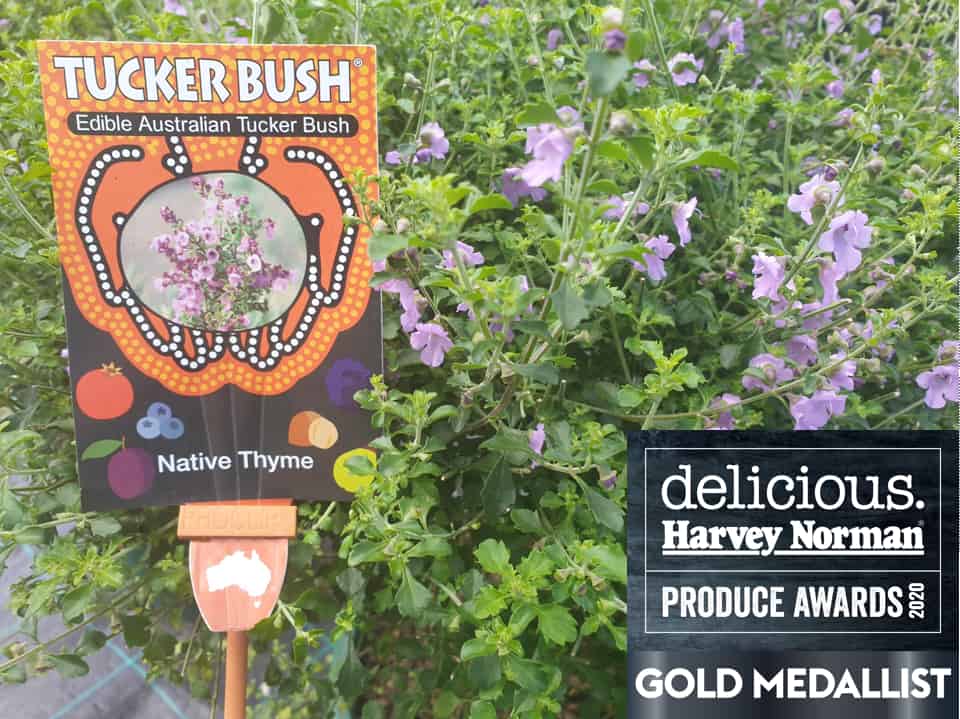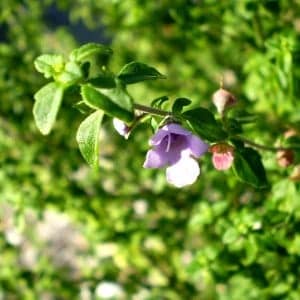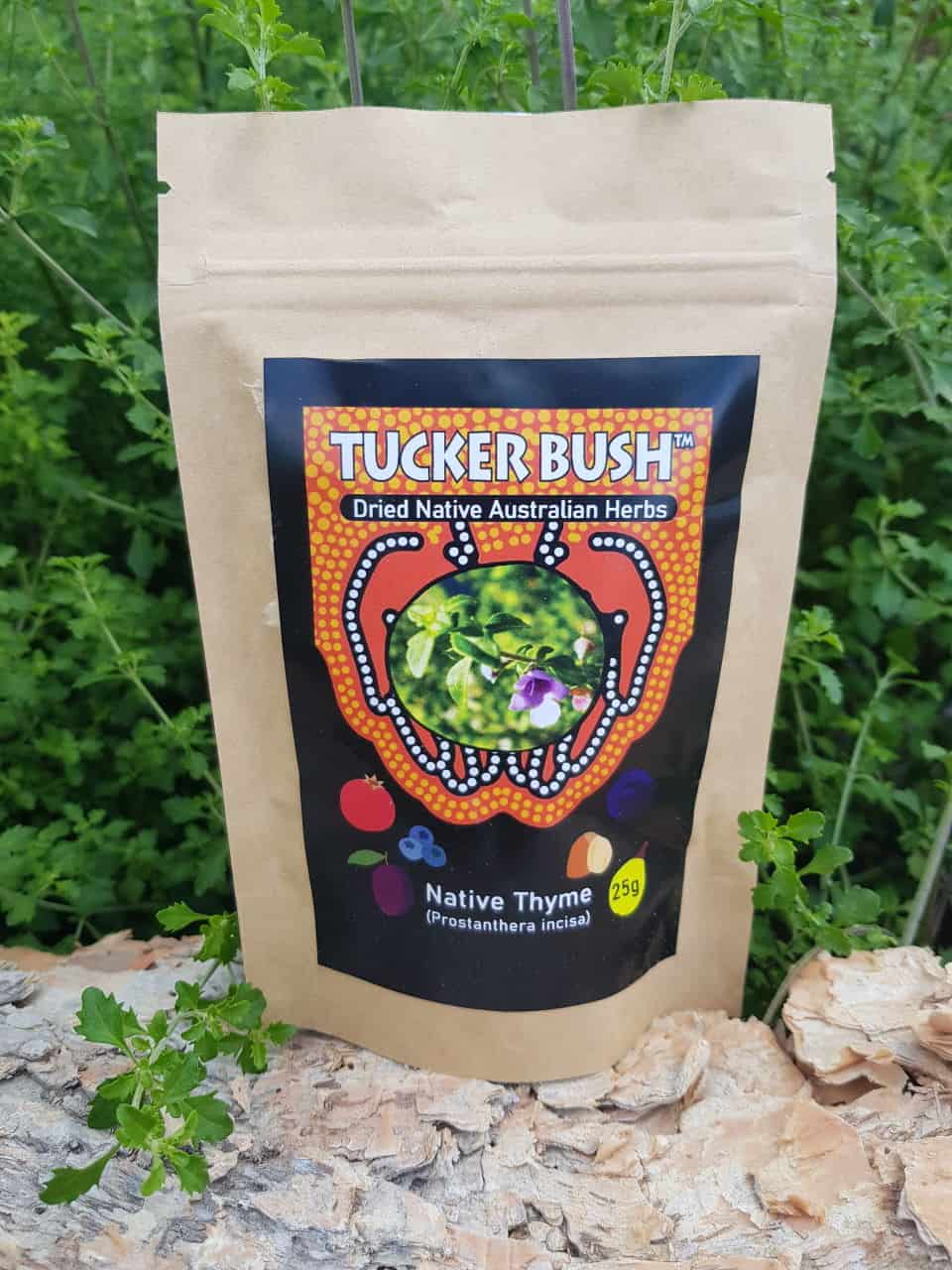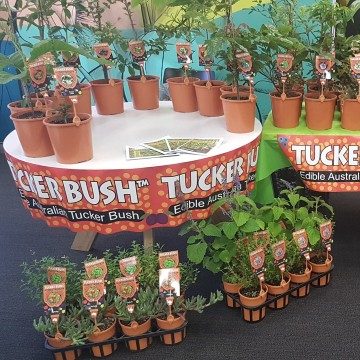Native Thyme (Prostanthera incisa) is an Australian medicinal bush herb that’s easy to underestimate — until you try it, of course. A new favourite in cooking and herbal teas, this bushfood botanical packs an aromatic punch with a flavour twist so impressive, it was deemed one of the very best in Australian produce at the 2020 delicious. Harvey Norman Produce Awards.

Although Native Thyme is generally regarded as the culinary equivalent to European thyme, we know it as a type of Australian mint alongside Native Oregano (Prostanthera rotundifolia), Native River Mint (Mentha australis), and Wild Mint (Mentha diemenica). Also called Cut-leaf Mint Bush and Native Sage, it boasts a more complex flavour than Mentha mints, carrying hints of citrus, pepper and earthy tones described as “pleasantly overpowering” by the Australian Plants Society. It’s an ideal complement to meats and savoury dishes, balancing out umami flavours with a fragrant sharpness and a light touch of warmth.
A brief history of Native Thyme
This shrubby plant is endemic to Australia’s south-eastern region, found growing wild along the coastline, in sheltered rainforest margins in sclerophyll areas, and around the Central Tablelands of modern New South Wales.
Long known for its use in Aboriginal herbal medicine, Native Thyme was later added to the European taxonomic mint family under Prostanthera, a genus named after the Greek words for “addendum” and “anther” in honour of the small appendages on the flower anthers of its species. Prostanthera is a diverse group of about 100 native mints found across all states of Australia, with new variations and hybrids regularly discovered.

In the early 1820s, European colonists transported plant samples to England, where Native Thyme’s international career began with small-scale commercial cultivation of essential oil and culinary spice.
Bush foods and bush tea
All above-ground parts of Native Thyme are edible — that’s leaf, stem and flower. To harvest, plush fresh foliage and blooms off the growing plant or prune whole stalks at a time. As this species grows quickly, a healthy specimen in your herb garden could provide you with a plentiful supply throughout the year.

As a bushfood herb, Native Thyme goes well with meats and fish, and can be used to flavour sauces, syrups, biscuits, and ice cream. Use it fresh from the plant or chopped and dried, but remember that, as with many native herbs, the natural flavours will fade over time once harvested, so we suggest waiting until the last possible moment.
To make your own bushfood tea (tisane), steep fresh leaves and flowers in hot water for a few minutes, until you achieve your desired strength and flavour.
Native Thyme in a micro-forest
In a bushfood micro-forest, the evergreen Native Thyme fits somewhere between your soft-bodied herb layer and your woody shrubs. Although it can quickly reach its 2m maximum height, its thin stems are easy to prune if you prefer this plant at a lower profile or as a simple gap filler. Enjoy a burst of small purple flowers during Spring, and attractive aromatic foliage for the rest of the year.
Any garden plant meant for eating should be kept away from sources of pollution, such as busy highways and industrial contamination. This is especially important for leafy herbs like Native Thyme, as pollutants on the surface of the leaves may leech into your food and water.
Choose a freely draining soil for your Native Thyme, as this species is susceptible to root rot when waterlogged. Use an organic compost before planting to give your new bushfood herb the best start in life. Grow in full sun or part shade, protect from hot dry winds, and hot afternoon sun in Summer. Twice weekly watering in summer is required.

Native Thyme (Prostanthera incisa) in a natural bushfood garden.
References:
- Ben. (2020, October 16). 2020 delicious. Harvey Norman Produce Awards: An All-Star Event [Review of 2020 delicious. Harvey Norman Produce Awards: An All-Star Event]. Harvey Norman Australia. https://www.harveynorman.com.au/blog/food-cooking/2020-delicious-harvey-norman-produce-awards-an-all-star-event/
- Prostanthera. (2023, July 8). In Wikipedia. https://en.wikipedia.org/w/index.php?title=Prostanthera&oldid=1164214410
- Prostanthera incisa. (2023, July 8). In Wikipedia. https://en.wikipedia.org/w/index.php?title=Prostanthera_incisa&oldid=1164214443
- Howes, J., & Clarke, D. (2021, September 25). Prostanthera incisa: Cut-leaved Mint Bush, Cut-leaf Mint Bush. Retrieved August 22, 2023, from https://resources.austplants.com.au/plant/prostanthera-incisa/




